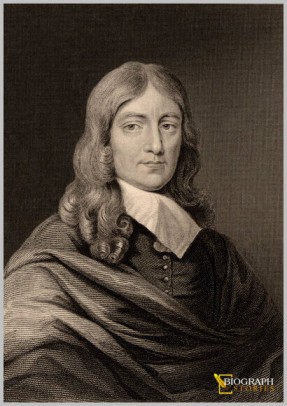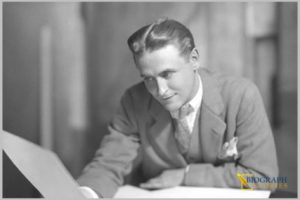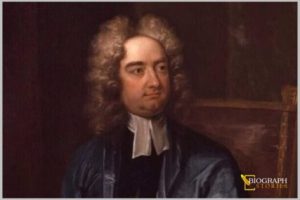
John Milton Quick Fact:
Born: December 9, 1608; London, England
Died: November 8, 1674; Chalfont St. Giles, England
NOTABLE WORKS:
- “Comus”
- “Paradise Lost”
- “Areopagitica”
- “Samson Agonistes”
- “Lycidas”
- “Il Penseroso”
- “L’Allegro”
- “Defense of the English People Against Salmasius”
- “History of Britain”
- “The Second Defense of the English People by John Milton, Englishman, in Reply to an Infamous Book Entitled “Cry of the King’s Blood””
Who is John Milton?
John Milton is widely known as an English poet, pamphleteer, and historian and considered as the most significant English author after William Shakespeare. Milton’s best work of his time is known as Paradise Lost which was widely regarded as the greatest epic poem in English of all time. Milton had marked his place in the history of English literature by creating together the Paradise Regained and Samson Agonistes and became one of the greatest English poets. With the help of his works, Milton encouraged the abolition of the Church of England and the execution of Charles I. From the beginning of the English Civil Wars, he adopted a political philosophy in all his works that opposed tyranny and state-sanctioned religion.
Early Life and Education
John Milton was born in December 9, 1608 in London, England. His father established a business as a scrivener when he was a child. His parents had three children named Anne, the oldest, followed by John and Christopher. From the early childhood, he fostered cultural interests as a musician and composer. His son formal education was taken care by a home tutor who was appointed by his father. The name of his private tutor was Thomas Young who was a Scottish Presbyterian. While he was in his early years, Milton used to hear the works of John Donne who was the dean of St. Paul’s Cathedral near his own school. He educated himself in Latin and Greek there and thus he acquired proficiency in other languages, especially Italian.
After that, Milton went at Christ’s College located in Cambridge in 1625 but unfortunately a year later he was temporarily expelled because of a conflict with one of his tutors. He was replaced under another tutor after that incident. In 1629, Milton was awarded a Bachelor of Arts degree and in 1632, he received a Master of Arts degree.
In 1632, he returned to his family home on the outskirts of London. Three years later, they relocated the family to a more pastoral setting in Horton, Buckinghamshire.
In 1638, Milton went for a tour of the Continent for about 15 months where he spent his most of the time in Italy, Rome and Florence.
Translations works and poems
After his return to England in the year 1639, Milton had shown remarkable talent as a translator and surprising flexibility as a poet. At the age of 15, he had translated Psalm 114 from the original Hebrew. From 1648 to 1653, he was also composing pamphlets against the Church of England and the monarchy. Milton’s first poem was called “Elegia prima ad Carolum Diodatum”.
Another early poem in Latin is “In Quintum Novembris” which Milton composed in 1626 at Cambridge. Throughout his career, Milton complained against Catholicism.
In 1628 Milton composed an occasional poem called “On the Death of a Fair Infant Dying of a Cough,” which mourns the loss of his niece Anne. In this early period, Milton’s principal poems included “On the Morning of Christ’s Nativity,” “On Shakespeare,” and the so-called companion poems “L’Allegro” and “Il Penseroso.” “On Shakespeare,” was Milton’s first published poem in English.
Milton’s most important early poems, Comus and “Lycidas,” are major literary achievements that his reputation as an author would have been secure by 1640 even without his later works.
Late in 1637 Milton composed a pastoral elegy called “Lycidas,” which commemorates the death of a fellow student at Cambridge, Edward King, who drowned while crossing the Irish Sea.
In 1639, he returned from abroad and turned his attention from poetry to text. From 1641 to 1642, he composed five tracts on the reformation of church government.
Marriage and children
After some controversies regarding his opinion in church government, he married Mary Powell in 1642, Milton was a few months afterward abandoned by his wife who returned to her family’s residence in Oxfordshire. Mary followed to the Royalist feelings of her family whereas her husband was progressively anti-Royalist. Soon after Mary’s return, she and Milton overcame the causes of their separation. Three daughters named Anne, Mary, and Deborah were born. Milton’s wife died in 1652 after giving birth to Deborah.
Education And Free Expression related works
Milton summarized a curriculum emphasizing the Greek and Latin languages not merely in and of themselves but as the means to learn directly the wisdom of Classical antiquity in literature, philosophy, and politics. The most renowned tract by Milton is Areopagitica (1644), which opposes governmental licensing of publications or procedures of censorship.
Works On History and Theology
Three extraordinary works highlight the depth of Milton’s knowledge and the scope of his interests. History of Britain (1670) was long in the making where Artis Logicae (1672; “Art of Logic”) was composed in Latin to gain the attention also of a Continental audience. De Doctrina Christiana (“On Christian Doctrine”) was composed between 1655 and 1660 though Milton never completed it.
Paradise Lost
Paradise Lost was his most popular master piece that he is known for and was also directly invokes Classical epics by beginning its action in Medias. Paradise Lost is ultimately not only about the downfall of Adam and Eve but also about the clash between Satan and the Son.
Milton’s last two poems were published in one volume in 1671. Paradise Regained, a brief epic in four books, was followed by Samson Agonistes, a dramatic poem not intended for the stage.
Death
The exact date and location of Milton’s death remain unknown even this day but it is known that he likely died in London on November 8, 1674, from complications of the gout (possibly renal failure). He was buried inside St. Giles Cripplegate Church in London.








